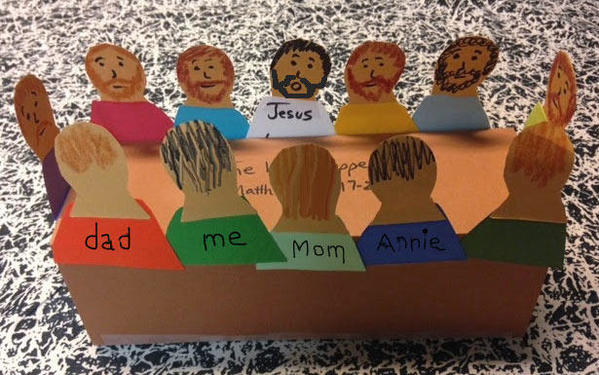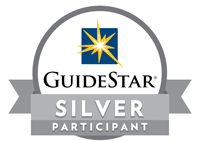Art Lessons, Ideas, Activities, and Resources for Teaching the Story of Jesus' Last Supper.
Lessons and Resources may also cover Communion and the Passover Seder.
Last Supper Cups, Bread Boards, Seder Plates, Chalices, and more!
Post your Sunday School ART lessons, ideas, activities, and resources for the Last Supper, Communion, and Seder here. Last Supper, Upper room, Judas, Bowl, Feet, This is my body, broken, cup, Do this in remembrance of me, Lord's Supper, Passover, Seder, Matthew 26:17-30; Mark 14:12-26; Luke 22:7-23; John 13:1-17, 21-30; 1 Corinthians 11:23-32; Exodus 11:4-8, 12:3-13, 37-39, etc.
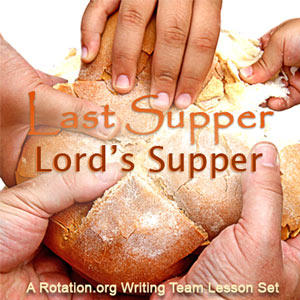 Be sure to see the Writing Team's Last Supper Lesson Set
Be sure to see the Writing Team's Last Supper Lesson Set
It has a great Art Workshop in it!
 Kicking off our group of art ideas...
Kicking off our group of art ideas...
The Last Supper: "Remember Me"
A Bread Board Art Workshop Lesson
Summary of Lesson Activity:
After learning the story, children will make a "Bread Board," and write 'Remember Me' on it using either acrylic paint or a wood burning tool. Children will sand the wood, drill a hole in it and tie a leather hanger to it.
A major goal of this project is to create a story reminder that can go home and remind the family too!
See the end notes for various "board" options, both purchased and homemade by a volunteer.
Scripture Reference:
Luke 22:7-23 is the story of the Last Supper in Luke. You may also use Matthew 26:17-30; Mark 14:12-26; John 13:1-17, 21-30; 1 Corinthians 11:23-32.
Lesson Objectives-
Children will:
- Understand what Jesus meant when he used the cup and bread during the Last Supper
- Understand what it means to say that Jesus was the "New Covenant"
- Understand that Jesus washed the disciples’ feet to give us an example of servanthood
- Know ways that Jesus wants them to "Remember him" by sharing his story and love with others
Materials List:
 Wood for breadboards (see endnotes for size and type and sources)
Wood for breadboards (see endnotes for size and type and sources)- sandpaper (fine grit)
- drill with 1/4" drill bit
- leather cord to create a hanging loop for the board, 6" per board
- wood-burning tool (or acrylic paints and brushes if desired)
- Bread for the closing prayer
- Age appropriate Bible Storybook or recommended video: Minno's Story of the Last Supper (seen below)
- Student Bibles
Tip: Ask your members if any of your hobbyists have a wood-burning tool they'd be willing to bring in and help the kids with. Otherwise, they cost under $15.
Lesson
Opening
Welcome the children and introduce yourself. Tell the children that during this lesson they will be learning about some special things that happened on the night before Jesus’ died on the cross.
Ask them "what story do you think I'm talking about?" And when they answer, start writing their memories of the story on the board and continue to fill it out. Then move on to reading the story together to disccover "what else happened" and "what they may have forgotten."
Show and Discuss the Story
(When this lesson was first posted, it used a Bible storybook that is now out of print. Feel free to use your own age-appropriate storybook or Bible that covers the Last Supper.
The following 7 minute video from Minno on YouTube may be shown first. It covers MORE than the Last Supper story giving the context for the Last Supper, Foot Washing and "New Covenant" Jesus promised when he broke the bread.
Follow it up by opening your Bibles to read the all important verse where Jesus says to "DO THIS TO REMEMBER ME" (Your translation may vary.) This is the phrase you will 'burn' onto your bread boards.
This free video is on YouTube at https://youtu.be/1jqVePv9IoM?si=FmEnmQl7-vXGPd4c. If you have a Minno subscription you can also get it from their website.
Questions for Follow up:
- What was the "new covenant" Jesus made?
- What was the foot washing all about?
- What was the bread and cup all about?
- How does it make YOU feel knowing all these things that Jesus taught us that night?
- What do you think Jesus wants us to DO to thank him and remember him?
All of your answers (and those in the video) are things that Jesus wants us to "remember" when we share bread as his disciples. In fact, THESE THINGS are the "bread" Jesus gives us -- the knowledge of who he is, what he has done for us, and how we should now live our lives!
To help us remember them, each of you is going to make your own Last Supper Bread Board to take home and tell the story with your family.
"Remember Me" Bread Board Activity:
Lead the children in:
- Sanding the board
- Drilling a hole for the leather (if needed)
- Looping the leather through the hole and tying it
- Wood-burning or painting the words “Remember Me” on the board.
As you work on the bread boards, continue reinforce and talk about the story. Ask a few questions about the "metaphor of sanding" -- what are the rough parts about you, your personality, your priorities that Jesus would like to "sand smooth." How and where will you share your bread board and its message with your family? Where can you hang it to remember Jesus and this lesson?
Closing:
Have each student place a piece of bread on their board and pray a prayer of thanks to Jesus for giving us his life and his message and an example of how we are to live our lives as his servants.
After everyone says "Amen," have them SERVE EACH OTHER the bread from their bread board.
About the Bread Board Wood
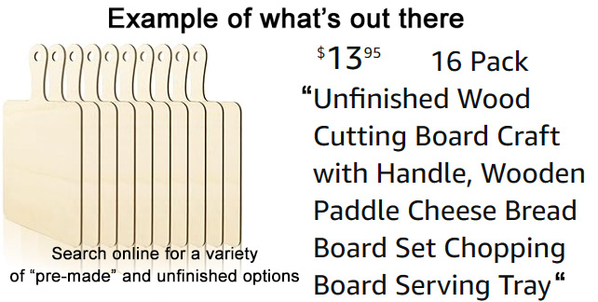 You will need to prepare in advance one "bread board" per student. If you have a woodworker in your church, this is an easy project for them. Share a possible design and let them know how much you want the kids to "finish" the board in the lesson. Invite them to come help the kids!! Boards can be a simple oval shape, or rectangular with a handle. Something on the "small size" is just fine.
You will need to prepare in advance one "bread board" per student. If you have a woodworker in your church, this is an easy project for them. Share a possible design and let them know how much you want the kids to "finish" the board in the lesson. Invite them to come help the kids!! Boards can be a simple oval shape, or rectangular with a handle. Something on the "small size" is just fine.
You can also purchase unfinished bread boards in bulk. They can be less than a dollar per board and can be found on "hobby" and "craft" sites, as well as Amazon. Look for "Unfinished Wood Cutting Board Craft." Some of these are quite thin but will do the job.
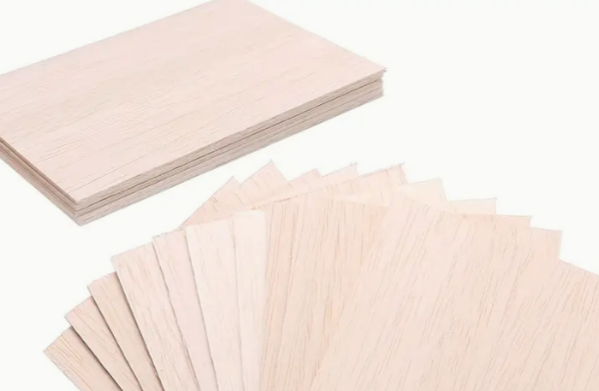 There is a type of thin "craft" board called "basswood" that is inexpensive, comes in sizes like 8x8, and is available in packs. These can be pre-cut/shaped by a volunteer, and sanded/drilled/burned or painted by your students.
There is a type of thin "craft" board called "basswood" that is inexpensive, comes in sizes like 8x8, and is available in packs. These can be pre-cut/shaped by a volunteer, and sanded/drilled/burned or painted by your students.
About Wood Burning
Children ages 8 and older with adult supervision can easily "burn" the words "Remember Me" into their board. First have them write it in pencil on their board, then have them "practice" on a "test board" how much pressure and how fast to move the stylus.
Be sure to open a window and have ventilation so you don't set off smoke detectors.
For an added measure of safety, use simple and inexpensive "heat resistant" or "cut resistant," or "cooking/kitchen" gloves for children.
BE SURE TO FOLLOW STRICT SAFTETY GUIDELINES WHEN OPERATING THE DRILL AND THE WOOD-BURNING TOOLS. BOTH ITEMS SHOULD ONLY BE USED UNDER DIRECT ADULT SUPERVISION!
It has been updated and detailed by the Rotation.org Content Team.
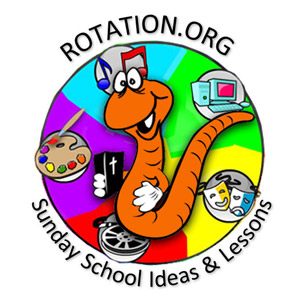
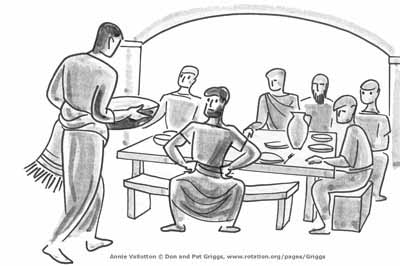 This forum is part of Rotation.org's
This forum is part of Rotation.org's 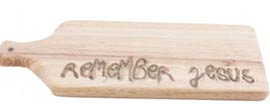





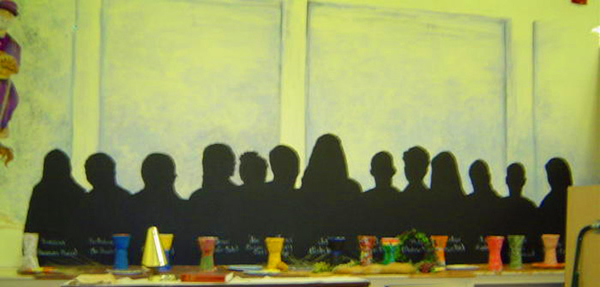
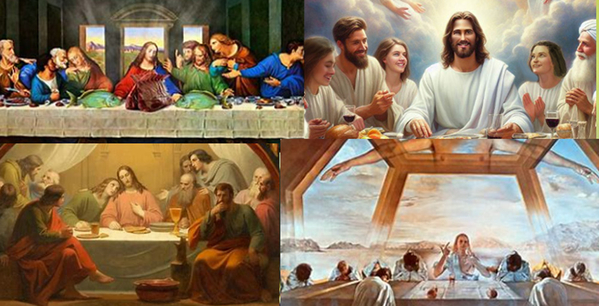


 Materials List
Materials List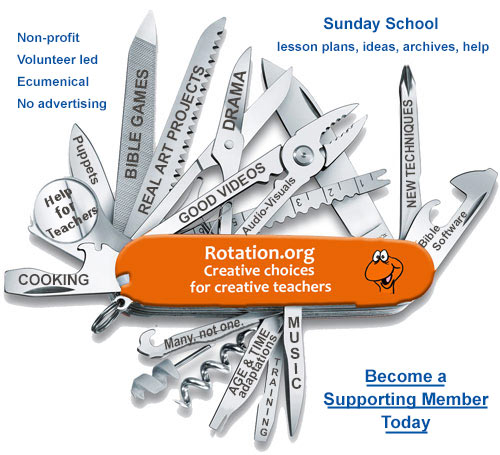

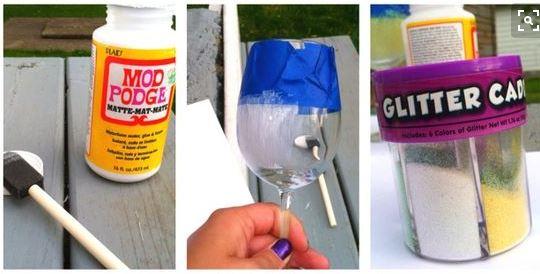
 After reading the story, place some bread on a plate and a cup next to it, then begin to pour grape juice into the cup. Point out that The Last Supper was a Passover meal. Explain that during the Passover meal, Jesus would have taken a special cup and raised it several times during the meal as a blessing and thanksgiving to God, Pour a juice in small cups for all your students so that they can join you in offering a blessing (a "toast") to Jesus for his forgiveness and presence with us today.
After reading the story, place some bread on a plate and a cup next to it, then begin to pour grape juice into the cup. Point out that The Last Supper was a Passover meal. Explain that during the Passover meal, Jesus would have taken a special cup and raised it several times during the meal as a blessing and thanksgiving to God, Pour a juice in small cups for all your students so that they can join you in offering a blessing (a "toast") to Jesus for his forgiveness and presence with us today.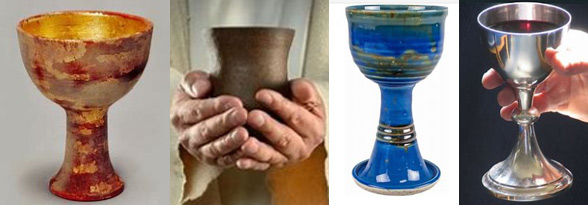



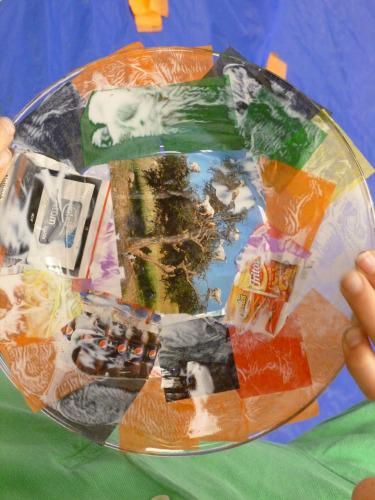
 Bibles (for 3rd grade and up)
Bibles (for 3rd grade and up)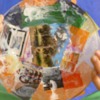






 Have children help cut the glycerin soap into small cubes, about 2 ounces each.
Have children help cut the glycerin soap into small cubes, about 2 ounces each.



